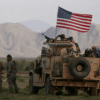ISBN 978-1682475577, Naval Institute Press, March 2021, 352 pages, $55.00
Reviewed by: James Kiras, School of Advanced Air and Space Studies, Montgomery, Alabama, USA
The potential for aircraft to change methods and modes of fighting has existed since the dawn of powered flight more than a century ago. Over that period, vociferous arguments have occurred based on two basic questions:
- Who should control and direct the use of airpower?
- How is airpower used to its greatest potential?
This recent addition to works on airpower contains forthright answers to both questions that will satisfy some and affront others.
Ben Lambeth brings impressive credentials to the task of narrating and assessing how airpower was used in Operation Inherent Resolve (OIR). He is presently a senior fellow at both the Center for Strategic and Budgetary Assessments and the Mitchell Institute for Aerospace Studies, with nearly four decades prior to that spent as a senior analyst at RAND, during which time he published more than a dozen studies on air and space power. He is perhaps best known for serving as an unofficial historian for the U.S. Air Force, chronicling and assessing its modern air campaigns from Kosovo through Afghanistan and Iraq since 2001. His depth of knowledge and understanding of the modern use of the air instrument is unmatched and the parallels he draws to those campaigns in this work are insightful and valuable. Given his track record and reputation, he has access to numerous senior Air Force leaders. Their thoughts and insights breathe life into what could easily turn into a stuffy, analytical exploration, as is the case with the recent RAND report on the same air campaign, The Air War Against the Islamic State.
Lambeth is at his best when discussing the employment of air forces at the tactical and operational level. He paints a picture of talented professionals at work: aircrews, planners, and leaders overcoming considerable obstacles to conduct strikes and other missions. Lambeth brings forward the activities of the mobility community delivering personnel and supplies—an aspect often overlooked in favor of actions by fighters and bombers in airpower narratives. The parallels he draws between daily combat action patrols and emergency close air support, and General Chuck Horner’s concept of “push-CAS” during Operation Desert Storm are deftly handled. A constant doctrinal source of friction between the Air Force and the U.S. Army, and the establishment of the Fire Coordination Support Line, is explained by Lambeth crisply and concisely in a very accessible manner.
He is less so when discussing matters of airpower strategy and its connection to politics. Two themes characterize these discussions. The first is a steady drumbeat against using airpower incrementally. More than a dozen times throughout the book Lambeth excoriates the shackling of airpower; he compares the early use of airpower against the Islamic State to the unsuccessful Rolling Thunder campaign in Vietnam. Airpower should be unleashed with all its weight and fury in an unrelenting campaign of compellence. Liberal quotations of observations and critiques from an Air Force captain throughout bearing witness to the constraints and a lack of strategy are unconvincing given their source. He ascribes the reluctance to use airpower to a lack of political resolve, lack of vision, or both. At times his discussion of decisions made by the Obama Administration is so repetitive and critical that it borders on the partisan and vitriolic, reflecting perhaps the recency of events as well as the current state of national political discourse. Other possible explanations for decisions or behavior he sweeps aside in pursuit of his two themes. The fact that early airpower decisions were being made within a Combatant Command headquarters—deprived of local intelligence due to the withdrawal of American forces in 2011—cannot be explained as a form of sensemaking and a reticence to do more harm than good with airstrikes in a new and dynamic environment populated by thousands of non-state actors in a complex civil war. In Lambeth’s depiction, the decision to withdraw from Iraq in 2011 was callow and the subsequent constraints imposed on airpower were the result of feckless executive leadership.
On special operations specifically, Lambeth is more objective. Special Operations Forces (SOF), however, serve mostly as background scenery in the overall narrative. Given the book is focused on airpower, this is understandable. OIR, however, was the seeming return of the so-called “Afghan model,” linking together airpower with local proxy forces through SOF. Given SOF enable both proxy forces and airpower and take advantage of the strengths of each while mitigating their weaknesses, it is surprising Lambeth does not explore this subject further. Alleged SOF innovations in the field, including the use or modification of proxy handheld devices to improve their situational awareness, as well as airpower targeting, are not discussed, nor in the role played by SOF air, which is invisible. Rather than examining SOF as a ground maneuver interface for airpower, Lambeth mostly relegates their role to raids against notable Islamic State leadership in passing. Overall, Lambeth’s work provides valuable insights, and its arguments—even if some of the latter related to airpower have become clichéd or tainted by partisan political rhetoric—warrant consideration. As one of the first works on this most recent military campaign, it will likely remain the standard reference work for some time, as official U.S. Air Force or U.S. Special Operations Command histories will be highly classified and unlikely to see the light of day any time, if they are ever written at all. This is all the more unfortunate scholastically and professionally as air and SOF campaigns against the Islamic State are rich with potential insights for future conflicts against non-state actors involving strategic competition between states.















